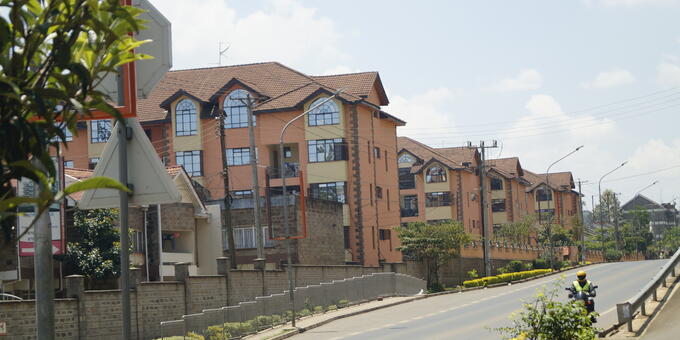
IRS Issues Frequently Asked Questions on Qualified Opportunity Zones/Funds
- Published
- Jul 9, 2020
- Topics
- Share
As has become its practice with legislation and regulations of significance, the IRS has recently issued a set of frequently asked questions (“FAQs”) on qualified opportunity zones (“QOZs”), to “provide a basic understanding and awareness” of the subject.
Following is a summary of highlights of the FAQs. The IRS makes the point that the FAQs do not constitute legal authority (and may not be relied upon as such), but they do provide an insight into the thinking of the IRS on the applicable rules and regulations.
QOZs – General Information
- A QOZ is an economically distressed community where new investments under certain conditions may be eligible for preferential tax treatment. Localities qualify as QOZs if they have been nominated for that designation by a state, the District of Columbia, or a U.S. territory and that nomination has been certified by the Treasury Secretary via his delegation of authority to the IRS.
- QOZs were added to the Internal Revenue Code (the “Code”) by the Tax Cuts and Jobs Act (“TCJA”) on December 22, 2017. QOZs have been designated to cover parts of all 50 states, the District of Columbia and five U.S. territories.
- QOZs are designed to spur economic development by providing tax incentives for investors who invest new capital in businesses operating in one or more QOZs.
- An investor can defer tax on any prior eligible gain to the extent that a corresponding amount is timely invested in a qualified opportunity fund (“QOF”). The deferral lasts until the earlier of the date on which the investment in the QOF is sold or exchanged or December 31, 2026. If the investment is held for at least five years, there is a 10% exclusion of the deferred gain. If the QOF investment is held for at least seven years, the 10% exclusion increases to 15%. The amount of eligible gain to include is decreased to the extent that the amount of eligible gain that the investor deferred exceeds the fair market value of the investment in the QOF.
- If the investor holds the investment in the QOF for at least ten years, the investor is eligible for an adjustment in the basis of the QOF investment to its fair market value on the date that the QOF investment is sold or exchanged. As a result, the appreciation in the QOF investment is never taxed. As described below, a similar rule applies to exclude the QOF’s share of gain and loss from sales of QOF assets.
Designated QOZs
- The QOZ tax incentives are available even if the investor does not live, work or have an existing business in a QOZ
- The list of each QOZ can be found in IRS Notice 2018-48 and Notice 2019-42.
Investor Questions
- QOFs
- A QOF is an investment vehicle that files either a partnership or corporate federal income tax return and is organized for the purpose of investing in QOZ property. An LLC that chooses to be treated as a partnership or a corporation for federal income tax purposes and is organized for the purpose of investing in QOZ property can be a QOF.
- To become a QOF, an eligible corporation or partnership self-certifies by annually filing Form 8996 with its timely federal income tax return (taking extensions into account).
- Deferral of Eligible Gain
- Gains that may be deferred are referred to as “eligible gains.” They include capital gains and “qualified 1231 gains,” but only gains that would be recognized for federal income tax purposes before January 1, 2027 and that are not from a transaction with a related person. To obtain the deferral, an investor must timely invest the amount of eligible gain in a QOF in exchange for an equity interest in the QOF (“qualifying investment”). The investor can then claim the deferral on a federal income tax return for the taxable year in which the gain would be recognized but for the deferral.
- In general, qualified 1231 gains are reported on Form 4797, Part I.
- Generally, an investor has 180 days to invest an eligible gain in a QOF (see below). If only part of the eligible gain is invested in a QOF, the investor can elect to defer only the part of the eligible gain that was invested in this way. A special rule applies if the last day of the 180-day period was on or after April 1, 2020 and before December 31, 2020. (In that case, under IRS Notice 2020-39, the last day of the 180-day investment period is automatically postponed to December 31, 2020.)
- An investor may make an election to defer the gain, in whole or in part, on the federal income tax return on which the tax on that gain would be due absent the deferral.
- An investor can elect to defer the amount of qualified 1231 gain if the amount of the gain was invested in a QOF during the 180-day period that begins on the day the qualified 1231 gain was realized. If the gain was realized in 2019, the 180-day period may begin on December 31, 2019.
- An investor must file an amended return to defer tax on the gain if the applicable federal income tax return has already been filed. An individual or a married couple uses Form 1040-X for this purpose and attaches Form 8949.
- Installment sales – Eligible gains from installment sales are eligible for deferral, to the extent they are timely invested in a QOF. The 180-day period during which to invest in a QOF begins on the day the installment payment is received, even if the installment sale giving rise to the gain took place prior to December 2017.
- If the installment sale takes place after 2017 and installment treatment is elected, there are two options as to deferring the gain:
- The investor may choose to have a single 180-day period for making one or more investments in one or more QOFs. In that case, the first day of the period is the last day of the tax year in which the sale occurred, and a single election is made to defer the gain on the sale up to the amount invested in QOFs during that period.
- A separate 180-day period may be chosen for each installment payment. In that case, each such period begins on the day on which the installment payment is received, and the gain with respect to each payment is deferred to the extent that an amount is invested in a QOF. Separate elections are made to defer gain.
- Property other than cash can be transferred to a QOF. A transfer of non-cash property may result in only part of the investment being a qualified investment (i.e., only part of the investment can benefit from the QOZ tax incentives). Specifically, the amount of gain that can be deferred is limited to the basis of the contributed property, even if a greater value of property is transferred.
- Nonresident alien individuals and foreign corporations may generally elect to defer eligible gains that are otherwise subject to federal income tax in their hands. That includes gains that are effectively connected to a U.S. trade or business and capital gains from the disposition of a U.S. real property interest by a nonresident alien individual or a foreign corporation. If the gain would be exempt from federal income tax under an applicable income tax treaty, the foreign person must waive any treaty benefits in order to elect to defer the gain.
- The holding period of property transferred to a QOF does not transfer to the qualifying investment in the QOF for purposes of the QOZ tax incentives.
- 180-Day Investment Period
- Generally, investors have 180 days to invest an eligible gain in a QOF. The first day of the 180-day period is the date the gain would be recognized for federal income tax purposes but for the election to defer.
- Where a partnership sells assets generating capital gains but does not make an election to defer the eligible gain, the partners have the option to start the 180-day investment period on any of the following dates:
- The last day of the partnership’s taxable year;
- The same day that the partnership’s 180-day period begins (i.e., date of the sale);
- The due date for the partnership’s tax return, without extensions, for the taxable year in which the partnership realized the eligible gain.
- With respect to regulated investment company (“RIC”) or real estate investment trust (“REIT”) capital gain dividends, investors can choose for the 180-day period with respect to eligible gain to begin either on the last day of the investor’s taxable year in which the capital gain dividend would otherwise be recognized or on the date of the dividend distribution.
- Basis Questions
- After an investor holds an investment in a QOF for at least ten years, basis in the QOF interest can be adjusted to its fair market value ONLY to the extent a proper deferral election was made (i.e., only to the extent the investment in the QOF is a qualifying investment).
- In addition to the basis increase rules for sales of qualifying QOF interests held for at least ten years, the holder of a qualifying investment (with respect to that investment) may elect to exclude all gains and losses generated from the sales of assets by that QOF or certain lower-tier partnerships owned by the QOF. This is permitted only if all of the following requirements are satisfied:
- It only applies to that portion of the investment that was a qualifying investment in a QOF partnership or QOF S corporation that the taxpayer held for at least ten years.
- There was an election made to exclude all the gains and losses from the sales that are attributable to the qualifying investment on a timely filed federal income tax return. This election to exclude gains and losses may be made for each year during which there are asset sales by the QOF or certain lower-tier partnerships.
- The gain from that sale was not derived from the sale of inventory in the ordinary course of a trade or business.
- The QOF must distribute (or be treated as making distributions of) the net proceeds from the sales within certain time periods.
- An investor defers an eligible gain by investing in a QOF partnership. (Accordingly, the partnership interest in the QOF is a qualifying investment.) The following year, this QOF partnership merges with another QOF partnership. No gain is recognized under the QOZ rules due to the merger, provided that the investor receives only a qualifying investment in the new partnership as a result of the merger. However, there may be gain recognition under the QOZ rules if other property is received as part of the merger.
- A profits interest received in exchange for services is not a qualifying investment in a QOF.
- Ordinary gain is not eligible for deferral.
- Inclusion of Deferred Gain
- An inclusion event, in general, is an event that reduces or terminates an investor’s qualifying investment in a QOF.
- An investor must include the remaining deferred gain on the earlier of an inclusion event or December 31, 2026. The amount of deferred gain included in income depends on (i) the fair market value of the investor’s qualifying investment in the QOF on the date of the inclusion event and (ii) adjustments to the tax basis of that qualifying investment.
- An investor elects to defer gain after making a qualifying investment in a QOF and now that QOF liquidates before December 31, 2026. When the QOF liquidates, the deferral period ends. The investor must include the deferred gain in the taxable year during which the QOF liquidates. The investor must report the gain on Form 8949 and must reflect the change to the QOF investment on Form 8997.
- Giving away a qualifying investment in a QOF (e.g., to a child) is an inclusion event, which ends the deferral period. The deferred gain related to the QOF investment must be reported. The child has a non-qualifying investment.
- Alternatively, if the qualifying investment is given to the investor’s revocable grantor trust, that transfer is not an inclusion event and does not end the deferral period. (Because it is a grantor trust, the investor is treated as the owner of the trust for federal income tax purposes.) A transfer of a qualifying investment to a non-grantor trust is an inclusion event, which ends the deferral period.
- The transfer of a qualifying investment in a QOF to a spouse pursuant to a divorce decree is an inclusion event, which ends the deferral period. When the investor files his federal income tax return for the year of the divorce, he must report the gain and the change to his qualifying investment. The spouse has a non-qualifying investment in the QOF.
- A QOF partnership makes an actual or deemed distribution of property (including cash) to a partner with respect to the partner’s qualifying investment on or before December 31, 2026. The distributed property has a fair market value in excess of the partner’s basis in the qualifying investment. That is an inclusion event. Subject to an exception for certain partnership transactions, the distribution received from the QOF partnership is an inclusion event to the extent that the distributed property has a fair market value in excess of the partner’s basis in the qualifying investment. However, this inclusion event does not prevent the partner from excluding from gross income any gains with respect to the remaining qualifying investment if the partner holds it for at least ten years and subsequently makes an election with respect to that investment.
- QOZ Property
- QOZ property is a QOF’s qualifying ownership interest in a corporation or partnership that operates a QOZ business in a QOZ or certain tangible property of the QOF that is used in a business in the QOZ. To be a qualifying ownership interest in a corporation or partnership, (i) the interest must be acquired after December 31, 2017, solely in exchange for cash; (ii) the corporation or partnership must be a QOZ business; and (iii) for 90% of the holding period of that interest, the corporation or partnership was a QOZ business.
- QOZ Business Property
- Tangible property is QOZ business property if:
- It is used in a trade or business of the QOF or in a QOZ business;
- It was purchased after December 31, 2017;
- The original use of the property in the QOZ commenced with the QOF or QOZ business OR the property was substantially improved by the QOF or QOZ business; and
- During substantially all of the time the QOF or QOZ business held the property, substantially all of the use of the property was in a QOZ.
- Tangible property is QOZ business property if:
- Purchase Requirement
- An investor contributes land located in a QOZ to a QOZ business. The QOZ business plans to construct a new building on the contributed land. The building is QOZ business property if it meets the following requirements: (i) it is intended to be used in a trade or business in a QOZ; (ii) the materials used to construct the new building are QOZ business property; and (iii) it is treated as acquired after 2017. (For this purpose, the newly constructed building is acquired on the date “significant physical work” begins.) The contributed land on which the building is located is NOT QOZ business property because it is not purchased by the QOF.
- When significant physical work begins depends on the facts and circumstances. Significant physical work does not include preliminary activities, such as planning or designing, securing financing, exploring or researching. For example, if a factory is to be constructed on a site, preliminary activities include clearing or testing of soil condition. However, significant physical work begins when work starts on the excavation of footings or the pouring of pads for the factory.
- Leased property can qualify as QOZ business property.
- If the parties to the lease are unrelated, the leased property can qualify as QOZ business property only if (i) the lease for the property is entered into after December 31, 2017; and (ii) the terms of the lease are market rate (i.e., the terms reflect common, arms-length market pricing in that location).
- In addition, if the parties to the lease are related, (i) there must be no prepayment in connection with the lease that exceeds 12 months; and (ii) if the leased property had been previously used in the QOZ, then, before the earlier of the last day of the lease, or 30 months after the receipt of tangible personal property under the lease, the business must freshly purchase for use with the leased property QOZ business property equal in value to the leased property.
- Original Use Property
- Original use of tangible property occurs when the property is first placed in service in a manner that would start depreciation or amortization if the property were being used in a trade or business. The original use of tangible property is in a QOZ if the property has not previously been placed in service in the QOZ. Accordingly, tangible property that had been placed in service outside of the QOZ (i.e., used property) can be original use property if the QOF or QOZ business is the first to place it in service in the QOZ.
-
- Vacant property (including a building) is original use property if:
- The property was vacant for an uninterrupted period of three years beginning after the date the IRS designated as a QOZ the census tract that contains the property; or
- The property began to be vacant at least one year prior to the date when the IRS designated the census tract as a QOZ, and the property remained vacant through the date of the purchase.
- Vacant property (including a building) is original use property if:
- Substantial Improvement of Property
- Property is substantially improved if, during any 30-month period beginning after the property is acquired, additions to the basis of the property exceed an amount equal to the adjusted basis at the start of the 30-month period.
- If tangible property is undergoing improvement and its basis has not yet been doubled but the QOF reasonably believes that the property will be QOZ business after improvements are completed, then during the 30-month substantial improvement period, the property counts as substantially improved.
- If a building is used in the active conduct of a trade or business, it is generally not necessary to substantially improve the parcel of land on which the building is located. However, if the land is unimproved or minimally improved, the land must be substantially improved. Further, the land fails to be QOZ business property if it was purchased with an expectation that it would not be improved by more than an insubstantial amount.
- “Substantially All” in the Definition of QOZ Business Property
- QOZ business property is tangible property owned or leased by a QOF or QOZ business that satisfies a variety of criteria, including requirements that, during “substantially all” of the time in which the QOF or QOZ business holds or leases the tangible property, “substantially all” of the use of that property by the QOF or QOZ business must be in a QOZ. The “substantially all” references have different meanings. Specifically, during at least 90% of the time in which the QOF or QOZ business holds or leases the tangible property, at least 70% of the use of that property by the QOF or QOZ business must be in a QOZ. Applied together, during the entire time in which the QOF or QOZ business owns or leases tangible property, at least 63% of the use of that tangible property must be in a QOZ.
- Mobile tangible property can qualify as QOZ business property. The FAQs provide the example of a landscaping business operated from a building located in a QOZ. The owner and employees meet at the building, receive job instructions for the day and transport the landscaping equipment to job sites located both within and outside QOZs. At the end of a job, the equipment is transported back to the building, and they carry out the rest of their job duties. Because the landscaping equipment is used in multiple census tracts, the number of days the tangible property is used in the various census tracts must be aggregated. Generally, if the landscaping equipment is used at least 70% of the days in QOZs, the equipment is substantially used in a QOZ. In addition, if the equipment, used at job sites both within and not within QOZs, is always returned to the building at least every 14 days, a safe harbor applies which allows up to 20% of the equipment to be excluded from the 70% calculation.
- Inventory (including raw materials) can qualify as QOZ business property. In addition, investors may choose annually to exclude inventory from QOZ business property and from the denominator of the applicable determination (whether 90% or 70%), if applied consistently to all inventory during that taxable year.
QOZ Business
- QOF 50% of Gross Income Test
- Each taxable year, a QOZ business must earn at least 50% of its gross income from business activities within a QOZ. The regulations provide three safe harbors that a business may use to meet this test. The safe harbors take into account any of the following:
- Whether at least half of the aggregate hours of services received by the business were performed in a QOZ;
- Whether at least half of the aggregate amounts that the business paid for services performed in a QOZ; or
- Whether necessary tangible property and necessary business functions were located in a QOZ.
- A QOZ business satisfies the 50% of gross income test if it satisfies any one of the above safe harbors.
- Each taxable year, a QOZ business must earn at least 50% of its gross income from business activities within a QOZ. The regulations provide three safe harbors that a business may use to meet this test. The safe harbors take into account any of the following:
EisnerAmper will continue to keep you informed on new developments on qualified opportunity zones, qualified opportunity funds and related issues.
Contact EisnerAmper
Ready to take the next step? Share your information and we’ll reach out to discuss how we can help.











